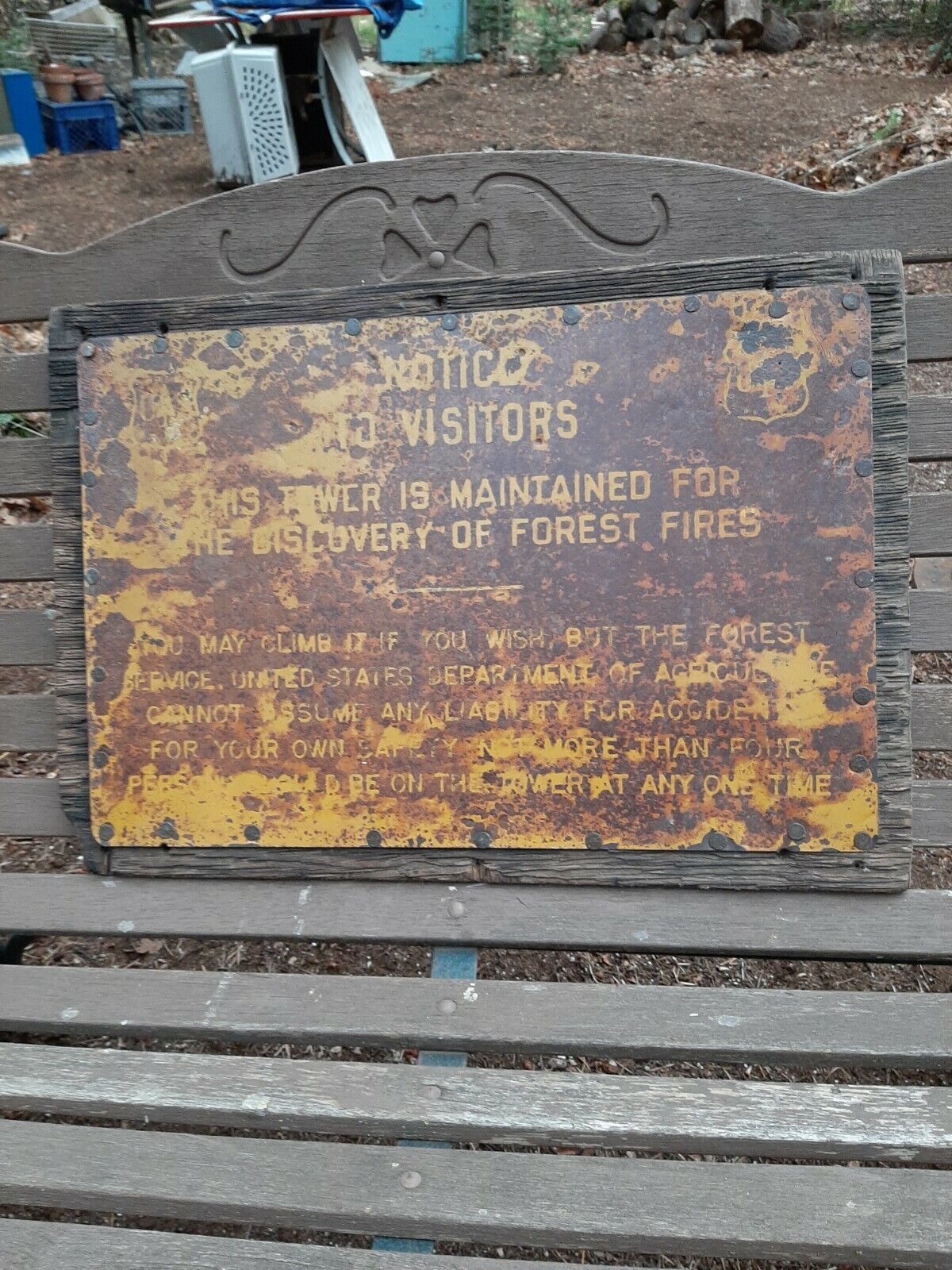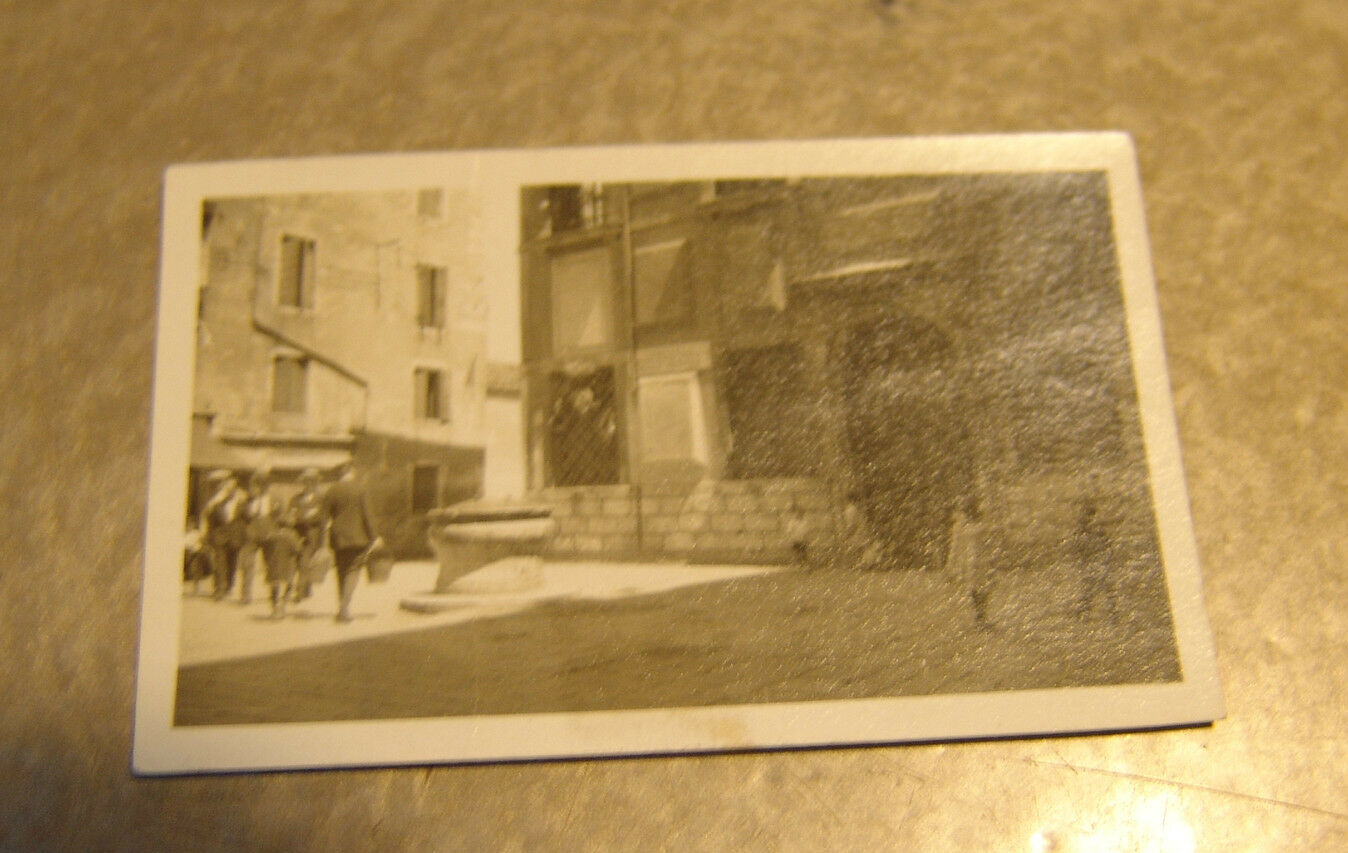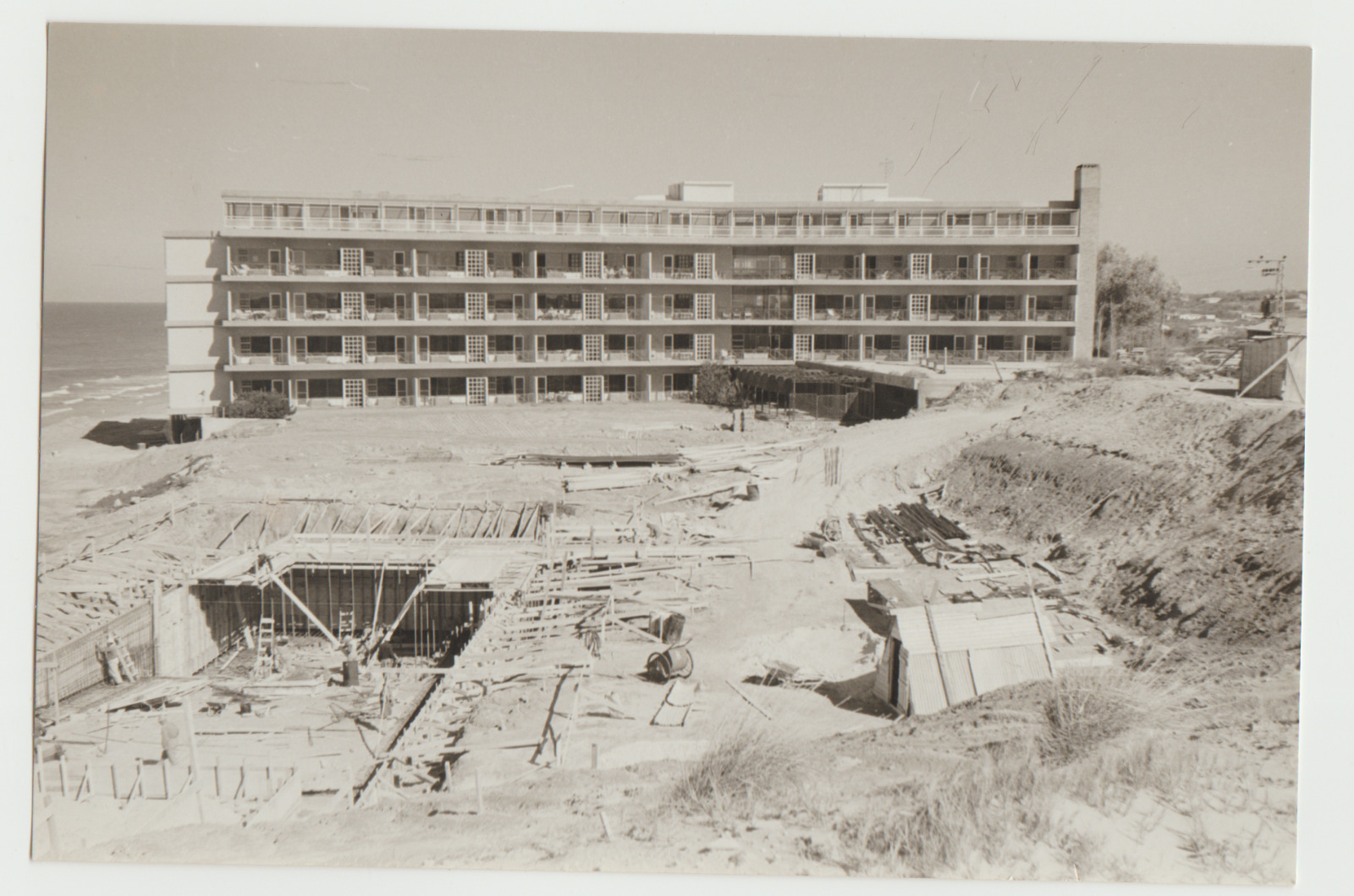-40%
1947 Holocaust JEWISH BOOKPLATE EXLIBRIS Judaica CULTURAL RECONSTRUCTION "J.C.R"
$ 23.76
- Description
- Size Guide
Description
DESCRIPTION:
This JEWISH- HEBREW bookplate was designed and published ca 194
7
, Right at the end of the period of the WW2 and the HOLOCAUST in the Amercan Zone of GERMANY and in the USA By the "
JEWISH CULTURAL RECONSTRUCTION, INC.
(
JCR
)
" ( JCR ),
organization established in 1947 to deal with the collection and redistribution of heirless Jewish cultural property in the American Zone of Germany, centered in Offenbach and later in Wiesbaden. Its headquarters were in New York and its logistical and financial support came from the Jewish Restitution Successor Organization (JRSO).
This UNIQUE and most beautiful EXLIBRIS , With its illustrationand BLUE MAGEN DAVID ( Also DAVID STAR or DAVID SHIELD or DAVID SHIELD OF ARMS ) was mounted on BOOKS which were rescued, saved and recovered from the HOLOCAUST FLAMES and RUINS by the "JCR" . The JEWISH
artist of RUSSIAN descent who created this bookplate is signed in the plate - Aaron FASTOVE ( Fastovsky ) .
M
any acclaimed Jewish artists such as
BUDKO , RABAN , GUR ARIEH , STRUCK , STEINHARDT and others , BAZALEL artists , Illustrators and painters were involved in the thrilling creation of JEWISH BOOKPLATES.
3.5 x 4"
.
Very good condition. ( Please watch the scan for a reliable AS IS image ) Will be sent in a special protective rigid sealed packaging.
PAYMENTS
:
Payment method accepted : Paypal
& All credit cards
.
AUTHENTICITY
: This is an ORIGINAL vintage
ca 1947
bookplate , NOT a reproduction or a reprint , And hold a life long GUARANTEE for their AUTHENTICITY and ORIGINALITY.
SHIPPMENT
:
Shipp worldwide via registered airmail is
$ 19
.
Will be sent in a special protective rigid sealed packaging.
W
ill be sent around 5 days after payment .
JEWISH BOOKPLATES, labels, usually inside book covers, indicating the owner of the books. The earliest ex libris with Hebrew wording were made for non-Jews. One of the first bookplates was made by Albrecht Duerer for Willibald Pirkheimer (c. 1504) with an inscription in Hebrew, Greek, and Latin of Psalms 111:10. Hector Pomer of Nuremberg had a woodcut ex libris (1525) that is attributed to Duerer or his disciple, Hans Sebald Beham, with the Hebrew translation of "Unto the pure all things are pure" (NT, Titus 1:15). "A time for everything" (Eccles. 3:1) in Hebrew is found on the bookplate (1530) by Barthel Beham, of Hieronymus Baumgartner of Nuremberg.Among the Jewish artists in England who engraved bookplates in the 18th century were Benjamin Levi of Portsmouth, Isaac Levi of Portsea, Moses Mordecai of London, Samuel Yates of Liverpool, and Mordecai Moses and Ezekiel Abraham Ezekiel of Exeter. However, they only made a few bookplates for Jews. The first known ex libris of a Jew was made by Benjamin Levi for Isaac Mendes of London in 1746. A number of British Jews in the 18th and 19th centuries had armorial bookplates bearing the family coat of arms, although some of them were spurious. Sir Moses Montefiore had several ex libris which bore his distinctively Jewish coat of arms. Among the few Jewish ex libris made in the latter half of the 18th century in Germany were those for David Friedlaender, engraved by Daniel N. Chodowiecki in 1774; and Bernhardt Friedlaender, by Johann M.S. Lowe in 1790. In the 18th century Dutch members of the Polack (Polak) family were among the early bookplate artists. A.S. Polak engraved a heraldic ex libris for the Jewish baron Aerssen van Sommelsdyk. Isaac de Pinto, a Dutch Sephardi Jew, had a bookplate featuring a huge flower vase with his monogram. The modern Russian-Jewish artist S. Yudovin engraved a number of exquisite woodcut bookplates which are among the relatively few with Yiddish inscriptions. Among other European Jewish artists who have used various graphic media to execute ex libris are Uriel Birnbaum, Lodewijk Lopes Cardozo, Fré Cohen, Alice Garman-Horodisch, Georg Jilovsky, Emil Orlik, and Hugo Steiner-Prag. Marco Birnholz (1885–1965) of Vienna, a foremost collector, had over 300 different ones for his own use that were made by many of the European Jewish graphic artists. Bookplates of three Jews are considered to be among the earliest American ex libris, dating from the first half of the 19th century. The pictorial bookplate of Barrak (Baruch) Hays of New York incorporated a family coat of arms. Benjamin S. Judah had two armorial bookplates, although there is no evidence that he was entitled to bear a coat of arms. Dr. Benjamin I. Raphael also had two ex libris – one showing a hand grasping a surgeon's knife and the other a skull and bones, symbols frequently found on medical ex libris. Among the early American college bookplates that have Hebrew words are those of Yale University, inscribed with Urim ve-Thumim, Columbia with Ori El ("God is my light," alluding to Ps. 27:1), and Dartmouth with El Shaddai ("God Almighty"). Many of the major universities in the United States have a variety of bookplates for their Judaica collections. American Jewish artists of bookplates include Joseph B. Abrahams, Joanne Bauer-Mayer, Todros Geller, A. Raymond Katz, Reuben Leaf, Solomon S. Levadi, Isaac Lichtenstein, Saul Raskin, and Ilya Schor.
- JEWISH CULTURAL RECONSTRUCTION, INC. (JCR), organization established in 1947 to deal with the collection and redistribution of heirless Jewish cultural property in the American Zone of Germany, centered in Offenbach and later in Wiesbaden. Its headquarters were in New York and its logistical and financial support came from the Jewish Restitution Successor Organization (JRSO). Its leadership was comprised of some of the foremost Jewish intellectuals of the day: Salo *Baron was its executive director; Joshua *Starr and later Hannah *Arendt served as executive secretaries. Gershom *Scholem, Shlomo Shunami, Bernard Heller, Mordechai *Narkiss, and E.G. Lowenthal were among those working in conjunction with JCR in Europe. Under the American Restitution Law (no. 59), JCR functioned as a trustee for those Jewish cultural items whose owners or heirs could not be located. By the end of its operations in 1951–52, JCR had redistributed hundreds of thousands of books and thousands of Torah scrolls and other ritual objects to major libraries and museums, including the Library of Congress and Bezalel in Jerusalem, as well as to institutions of higher learning such as the Jewish Theological Seminary in New York. A total of 85% of the cultural property was sent to Israel and the United States; 8% was allocated to Western European countries (with half going to Britain) and the remaining 7% was distributed to South Africa, Argentina, Brazil, Australia, Canada, and West Germany. Although it had no international standing, the organization encouraged the establishment of similar bodies in the British and French Zones of Occupation. - Jewish Cultural Reconstruction, Inc. (JCR) was an organization established in 1947 to collect and distribute heirless Jewish property in the American occupied zone of Germany after World War Two.[1] About 150,000 heirless items (mostly books from the Offenbach Archival Depot whose owners could not be identified) were distributed by the JCR to libraries in the United States and abroad.[2] Funding for the JCR's operations was provided by the American Jewish Joint Distribution Committee and the Jewish Agency for Palestine. Among the leaders and officers of the organization were Salo Baron, Hannah Arendt, Leo Baeck, and Gershom Scholem.[3] The JCR ceased operations in 1952. References 1. · "Jewish Cultural Reconstruction, Inc", Jewish Virtual Library, retrieved 2013-08-29 · · Waite, Robert G. (2002). "Returning Jewish Cultural Property: The Handling of Books Looted by the Nazis in the American Zone of Occupation, 1945 to 1952". Libraries & the Cultural Record 37 (3): 213–228. doi:10.1353/lac.2002.0062. ISSN 1932-9555. 3. · PLUNDER AND RESTITUTION: Findings and Recommendations of the Presidential Advisory Commission on Holocaust Assets in the United States and Staff Report, 2000, retrieved 2013-08-29 Further reading Shlomit Steinberg. Orphaned Art: Looted Art from the Holocaust in the Israel Museum, Exhibition Catalogue, The Israel Museum, Jerusalem, 2008Shlomit Steinberg."Provenance Research in Museums: Between History and Methodology", Taking Responsibility, Nazi-looted Art – A Challenge for Museums, Libraries and Archives, Magdeburg, 2009, pp. 307-319Shlomit Steinberg, “The Road Paved with Good Intentions: Between Berlin and Jerusalem 1945-1955”, Auf der Suche nach einer verlorenen Sammlung, Das Berliner Judisches Museum (1933-1938), Exhibition Catalogue, Berlin, 2011, pp. 48-57Shlomit Steinberg, "The Road to recovery: From the Central Collecting Points to a Safe Haven – The J.R.S.O, Dossier". In Schriftenreihe der Kommission fur Provenienzforschurg 3, Christopher Bazil and Eva Blimlinger (eds.). Bohlau Verlag, Wien-Koln–Weimar, 2012, pp. 119-132 Elisabeth Gallas: Kulturelles Erbe und rechtliche Anerkennung. Die JCR, Inc. nach dem Zweiten Weltkrieg, in: Jahrbuch für Antisemitismusforschung, 22. Metropol, Berlin 2013, ISBN 3863311558, pp. 35 – 56 (in German) Elisabeth Gallas: "Das Leichenhaus der Bücher." Kulturrestitution und jüdisches Geschichtsdenken nach 1945. Vandenhoeck & Ruprecht, Göttingen 2013 ISBN 3525369573 (in German) The American Jewish Joint Distribution Committee, also known as the Joint or the JDC, is a Jewish relief organization based in New York City.[1] History
***** Aaron Fastovsky FASTOVE (1898-1979) Birth place: Kiev, Russia Addresses: Bronx, NY Profession: Painter, illustrator Studied: Kiev Conservatory Music and Art; ASL with Homer Boss Exhibited: Nat. Acad. Design, 1963; Univ. Notre Dame, 1964; Expos Intercontinental, Monaco, 1966, 1968; Prix de Paris, Raymond Duncan Gallery, Paris, France, 1967; New York, NY (2 solos); NYC WPA Art" at Parsons School Design, 1977; plus many other group exhibs. Awards: Municipal Art Gal., 1939; special mention for contribution to first Index of American Design, MMA, 1942." Member: Am. Federation Arts; Woodstock AA Work: National Gallery Art, Washington, DC. Comments: WPA artist assigned to the MMA to do renderings of American folk art in watercolor and pencil for The Index of American Design." Worked during WWII as a technical illustrator and concert violinist. Preferred media: oils. Publications: contributor, Art Digest, 1950. ebay3046













